
Joseph Ritter von Fraunhofer was a German physicist and optical lens manufacturer. He made optical glass, an achromatic telescope, and objective lenses. He also invented the spectroscope and developed diffraction grating. In 1814, he discovered and studied the dark absorption lines in the spectrum of the sun now known as Fraunhofer lines.

Astrophotography, also known as astronomical imaging, is the photography or imaging of astronomical objects, celestial events, or areas of the night sky. The first photograph of an astronomical object was taken in 1840, but it was not until the late 19th century that advances in technology allowed for detailed stellar photography. Besides being able to record the details of extended objects such as the Moon, Sun, and planets, modern astrophotography has the ability to image objects invisible to the human eye such as dim stars, nebulae, and galaxies. This is accomplished through long time exposure as both film and digital cameras can accumulate and sum photons over long periods of time.

Yerkes Observatory is an astronomical observatory located in Williams Bay, Wisconsin, United States. The observatory was operated by the University of Chicago Department of Astronomy and Astrophysics from its founding in 1897 to 2018. Ownership was transferred to the non-profit Yerkes Future Foundation (YFF) in May 2020, which began restoration and renovation of the historic building and grounds. Re-opening for public tours and programming began May 27, 2022.

A refracting telescope is a type of optical telescope that uses a lens as its objective to form an image. The refracting telescope design was originally used in spyglasses and astronomical telescopes but is also used for long-focus camera lenses. Although large refracting telescopes were very popular in the second half of the 19th century, for most research purposes, the refracting telescope has been superseded by the reflecting telescope, which allows larger apertures. A refractor's magnification is calculated by dividing the focal length of the objective lens by that of the eyepiece.
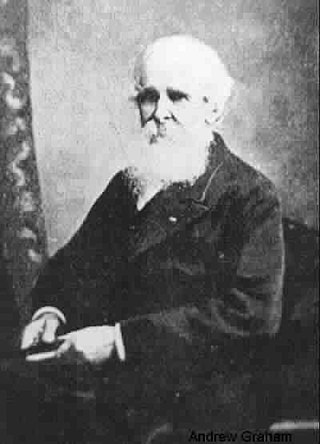
Andrew Graham, born in Irvinestown County Fermanagh, Ireland, was an Irish astronomer, orbit computer and discoverer of the asteroid 9 Metis.

John Tebbutt was an Australian astronomer, famous for discovering the "Great Comet of 1861".

Armagh Observatory is an astronomical research institute in Armagh, Northern Ireland. Around 25 astronomers are based at the observatory, studying stellar astrophysics, the Sun, Solar System astronomy and Earth's climate.

Markree Observatory was an astronomical observatory in County Sligo, Ireland. The asteroid 9 Metis was discovered from this observatory in 1848 by Cooper's assistant Andrew Graham using a comet seeker telescope. The observatory was also home to the largest refractor of the early 1830s, which had a 13.3-inch (340 mm) aperture Cauchoix of Paris lens; the largest in the world at that time. The observatory also housed a number of instruments and was operated to varying degrees throughout the 19th century.

The Vienna Observatory is an astronomical observatory in Vienna, Austria. It is part of the University of Vienna. The first observatory was built in 1753–1754 on the roof of one of the university buildings.
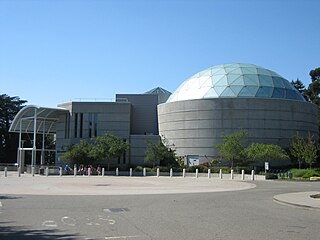
Chabot Space and Science Center, located in Oakland, California, is a center for science learning featuring interactive exhibits, planetariums, a large screen theater, hands-on activities and three powerful telescopes.

The Crossley telescope is a 36-inch (910 mm) reflecting telescope located at Lick Observatory in the U.S. state of California. It was used between 1895 to 2010, and was donated to the observatory by Edward Crossley, its namesake.

Great refractor refers to a large telescope with a lens, usually the largest refractor at an observatory with an equatorial mount. The preeminence and success of this style in observational astronomy defines an era in modern telescopy in the 19th and early 20th century. Great refractors were large refracting telescopes using achromatic lenses. They were often the largest in the world, or largest in a region. Despite typical designs having smaller apertures than reflectors, great refractors offered a number of advantages and were popular for astronomy. It was also popular to exhibit large refractors at international exhibits, and examples of this include the Trophy Telescope at the 1851 Great Exhibition, and the Yerkes Great Refractor at the 1893 World's Fair in Chicago.
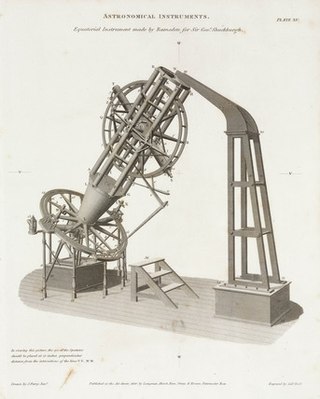
The Shuckburgh telescope or Shuckburgh equatorial refracting telescope was a 4.1 inches (10.4 cm) diameter aperture telescope on an equatorial mount completed in 1791 for Sir George Shuckburgh (1751–1804) in Warwickshire, England, and built by British instrument maker Jesse Ramsden (1735–1800). It was transferred to the Royal Observatory, Greenwich in 1811 and the London Science Museum in 1929. Even though it has sometimes not been regarded as particularly successful, its design was influential. It was one of the larger achromatic doublet telescopes at the time, and one of the largest to have an equatorial mount. It was also known as the eastern equatorial for its location.
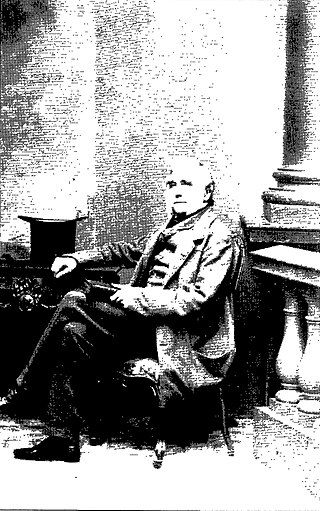
Edward Joshua Cooper was an Irish landowner, politician and astronomer from Markree Castle in County Sligo. He sat in the House of Commons of the United Kingdom from 1830 to 1841 and from 1857 to 1859, but is best known for his astronomy, and as the creator of Markree Observatory.

Georg Merz was a Bavarian optician and manufacturer of astronomical telescopes and other optical instruments.

The Greenwich 28-inch refractor is a telescope at the Royal Observatory, Greenwich, where it was first installed in 1893. It is a 28-inch ( 71 cm) aperture objective lens telescope, otherwise known as a refractor, and was made by the telescope maker Sir Howard Grubb. The achromatic lens was made Grubb from Chance Brothers glass. The mounting is older however and dates to the 1850s, having been designed by Royal Observatory director George Airy and the firm Ransomes and Simms. The telescope is noted for its spherical dome which extends beyond the tower, nicknamed the "onion" dome. Another name for this telescope is "The Great Equatorial" which it shares with the building, which housed an older but smaller telescope previously.
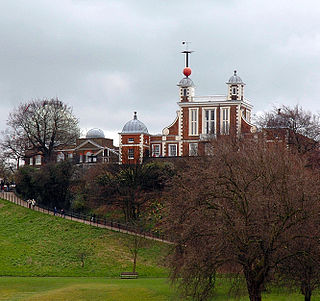
The Sheepshanks Equatorial Telescope was a 6.7-inch (170mm) aperture refracting telescope installed in 1838 at the Royal Observatory in Greenwich. The telescope was donated to the observatory by the astronomer Richard Sheepshanks. The telescope had a doublet objective lens made by Cauchoix of Paris. Originally it was mounted on a clockwork driven equatorial mounting by the Grubb Telescope Company on a stone pillar.



















